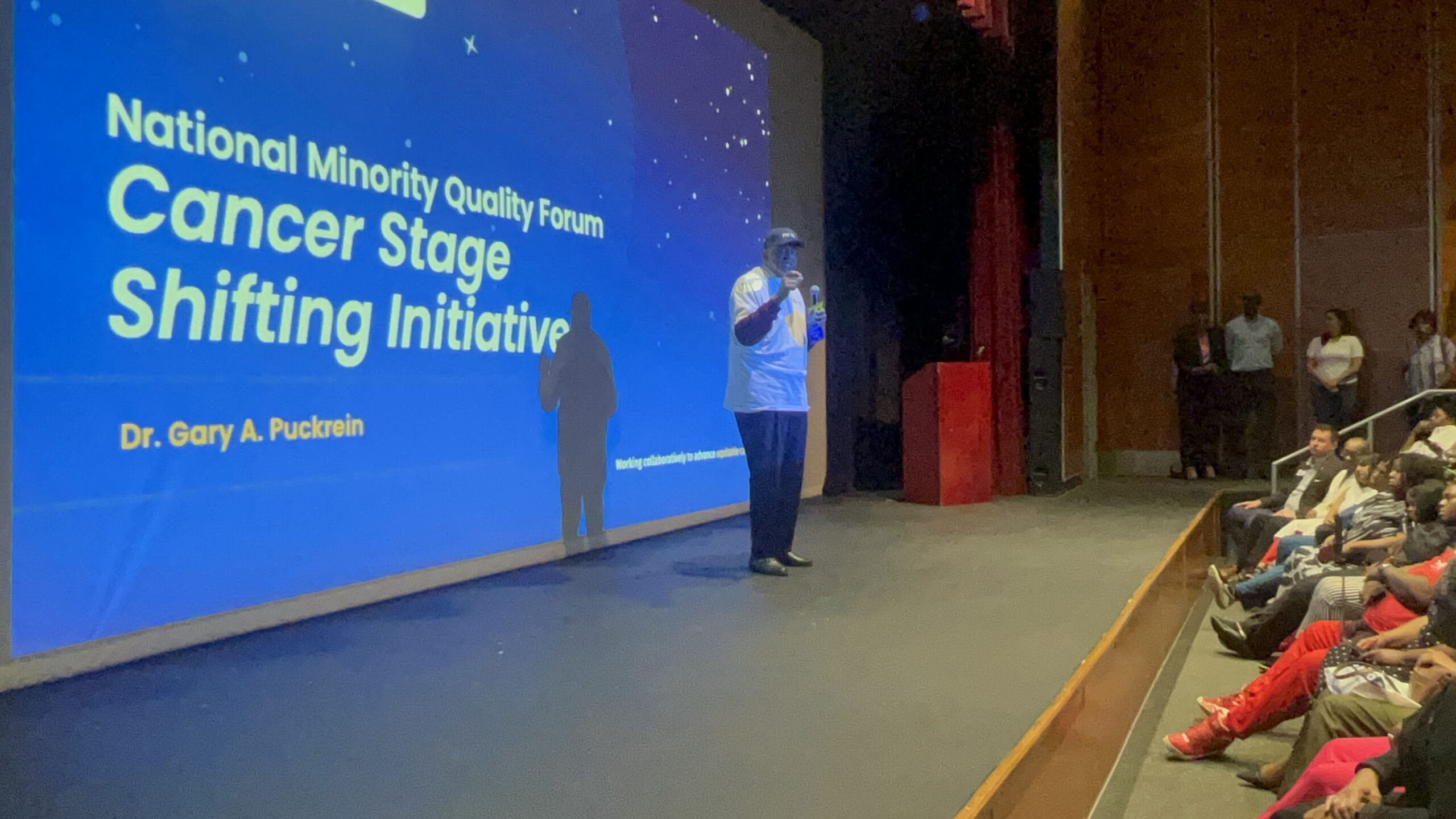
|14 March 2025
News
|22 February 2024

The National Minority Quality Forum (NMQF) and CEO Roundtable on Cancer have released a new report that found that 56% of people living in the U.S. within 3 kilometers of carcinogenic sites were people of color. Experts say this statistic is especially significant, as research shows a correlation between the disproportionate environmental exposure of toxic chemicals on communities of color and an increased risk of cancer.
The report focuses on regions such as Flint, Michigan, the greater Houston area, and Cancer Alley in Louisiana, all of which have been deemed “cancer clusters” for their abnormally high rates of cancer. These regions also have higher percentages of impoverished residents of color, which alludes to the longstanding history of racially discriminatory housing policies in the U.S.
“There is a real link and correlation between [cancer and] historical public policies like redlining, which consisted of discriminatory housing and lending practices that forced marginalized communities into specific zip codes that happened to be within close proximity of carcinogenic waste sites,” said Adjoa Kyerematen, the vice president of NMQF.
The report was submitted to the Cancer Moonshot team at the White House Office of Science and Technology Policy, a national effort to mitigate the risks of cancer that was initially launched in 2016 by Vice President Joe Biden and was revived in 2022 as part of his broader health care agenda to reduce cancer-related deaths by 50% in the next 25 years.
As part of the public-private collaboration, the team also established the Cancer Stage Shifting Initiative to reduce the incidence of cancer, enable early detection, and bridge the health care gap by providing urgent care to underserved communities. Researchers will conduct a large-scale pilot study to generate scalable cancer protocols to improve cancer care disparities and find an affordable solution for all patients.
“What’s at stake is people’s lives—generations of families and the promise of this country that everyone is treated equal,” Kyerematen said. “So imagine that that promise has been denied daily because of where you were born and then being denied when you raise your voice.”
In Louisiana, an 85-mile strip of land in the lower Mississippi region known as Cancer Alley contains 378 industrial facilities, more than half of the state’s total number of sites. Cancer Alley is also home to seven of the nation’s 10 census tracts with the highest risks of cancer. Within the region, companies like St. Charles Operations Union Carbide Corp., BASF Corp., BCP Ingredients Inc., and Hexion Inc. emit toxic chemicals such as hexavalent chromium, ethylene oxide, formaldehyde, and benzene.
One of the most notable polluters is the Dupont Pontchartrain Works facility, the only chloroprene-producing facility in the U.S. to date, which presents the greatest risk of cancer from air pollution of any factory in the country. Residents closest to this factory face 50 times the national average of contracting cancer.
Shamell Lavigne, the chief operating officer of the environmental justice nonprofit RISE St. James and a longtime resident, says the area looks completely different from when she grew up there. In the years since, increased global industrialization has transformed her neighborhood for the worse.
“We have 12 industries within a 10-mile radius in St. James, and we have high cancer rates,” she said. “It may be one street where, every other household, somebody has been diagnosed with cancer.”
It was in 2018 that Lavigne first heard about Formosa Plastics, a petrochemical company that had been granted permits to build a $9.4 billion plant over an unmarked plantation cemetery. It was also a mere 2 miles away from a predominantly Black elementary school—as well as from her family home where her mother currently lives.
In response, RISE, along with various other organizations, sued the Louisiana Department of Environmental Quality (LDEQ) for granting Formosa the air permits. In September 2022, the movement enjoyed a large win, as the judge ruled in their favor to vacate all of Formosa’s air permits, citing myriad failures by environmental regulators.
The victory was short-lived, however, when LDEQ, Formosa, and the State Land Department appealed to the First Circuit. On Jan. 19, 2024, the department reinstated Formosa’s air permits, abusing the significant impact levels guidance from the EPA in the process, Lavigne claims. To make matters worse, newly instated Gov. Jeff Landry actively worked against environmental organizations when he sued the EPA during the groups’ investigation into whether state environmental regulators had breached the Civil Rights Act by allowing Formosa to operate in the area.
Rearing from the news, Shamell and her team have been working to issue public statements and are in constant communication with their attorneys, communications team, and other organizations like Earthworks, Friends of the Earth, Earthjustice, and Tulane Environmental Law Clinic to make sure their voices are not silenced.
“It ignited another fight in us. We were disappointed, but we’re ramping up. It’s not going to happen on our watch,” she said.
As the director of community engagement at Tulane Environmental Law Clinic, Kim Terrell brings an environmental science background to Louisiana’s grassroots environmental justice movement. One overarching issue concerning her group is the lack of science-based decision making. Their group’s mission is to equip state regulators with the best available science prior to deciding whether to permit a new facility.
“The ambient air standards in Louisiana haven’t been updated in decades; they don’t reflect the best available science,” she said.
One example lies in the contentious issue of whether states can use significant impact levels, which are ambient air pollutants deemed inconsequential to National Ambient Air Quality Standards, to allow greater pollution—beyond the legal standards—into communities on the basis that they are negligible. In the case of Formosa’s appeal, the company argued that while it would produce pollutants above the National Ambient Air Quality Standards, their emissions would only contribute a small amount to the violations.
Another issue lies in who creates the standards for how much toxic pollution can exist in the air. While there are federal limits for a small number of pollutants, says Terrell, there is a much longer list of pollutants that the EPA hasn’t set standards for. In the absence of a federal standard, some states set their own.
This occurred in the case of the Dupont facility, which is the only plant in the US to emit chloroprene. While the EPA recommends a maximum concentration in the air of 0.2 micrograms per cubic meter, the Louisiana ambient air standard for that specific chemical was 857 micrograms per cubic meter—more than 4,000 times higher than what the EPA recommends as a maximum. According to Terrell, these state-manufactured regulations can create a false sense of security for people who may believe the air pollution in their community falls within safe levels.
“It’s kind of easy to dismiss when you don’t interact with the people who are being affected,” she said. “There’s a very real human health toll of these decisions.”
Kyerematen hopes her team’s latest report and forthcoming pilot study will play a critical role in enhancing data-based cancer prevention and amplifying health care infrastructure for medically underserved communities. She believes this movement shouldn’t be limited to health stakeholders, but rather, everyone has a role to play to collectively advocate and mobilize against the existing cancer care disparities.
“We see the Cancer Stage Shifting Initiative and this concern of the intersection between cancer and environmental injustice as the next civil rights movement,” Kyerematen said. “This project is really important to raise attention and awareness but also to provide a message of hope and say that help is on the way.”
National Minority Quality Forum is a research and educational organization dedicated to ensuring that high-risk racial and ethnic populations and communities receive optimal health care. This nonprofit, nonpartisan organization integrates data and expertise in support of initiatives to eliminate health disparities.
 1201 15th Street, NW, Suite 340, Washington, DC 20005
1201 15th Street, NW, Suite 340, Washington, DC 20005
FOLLOW US ON: